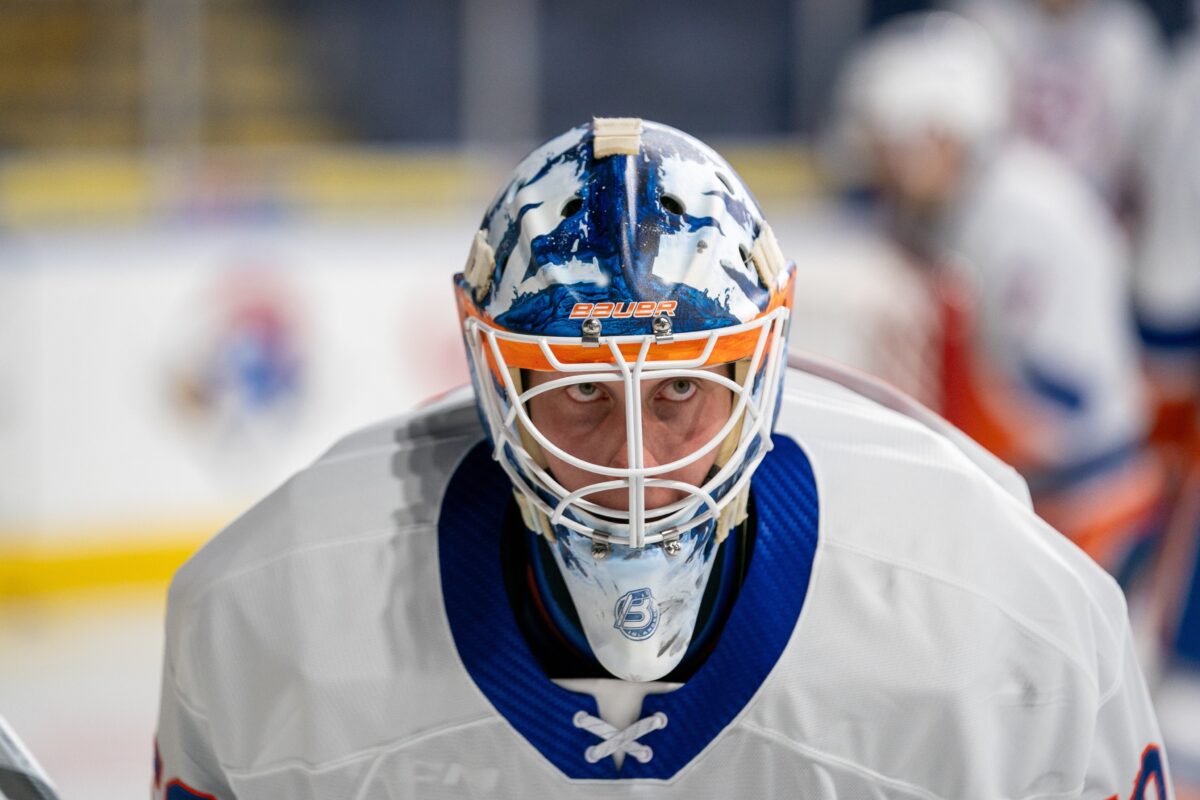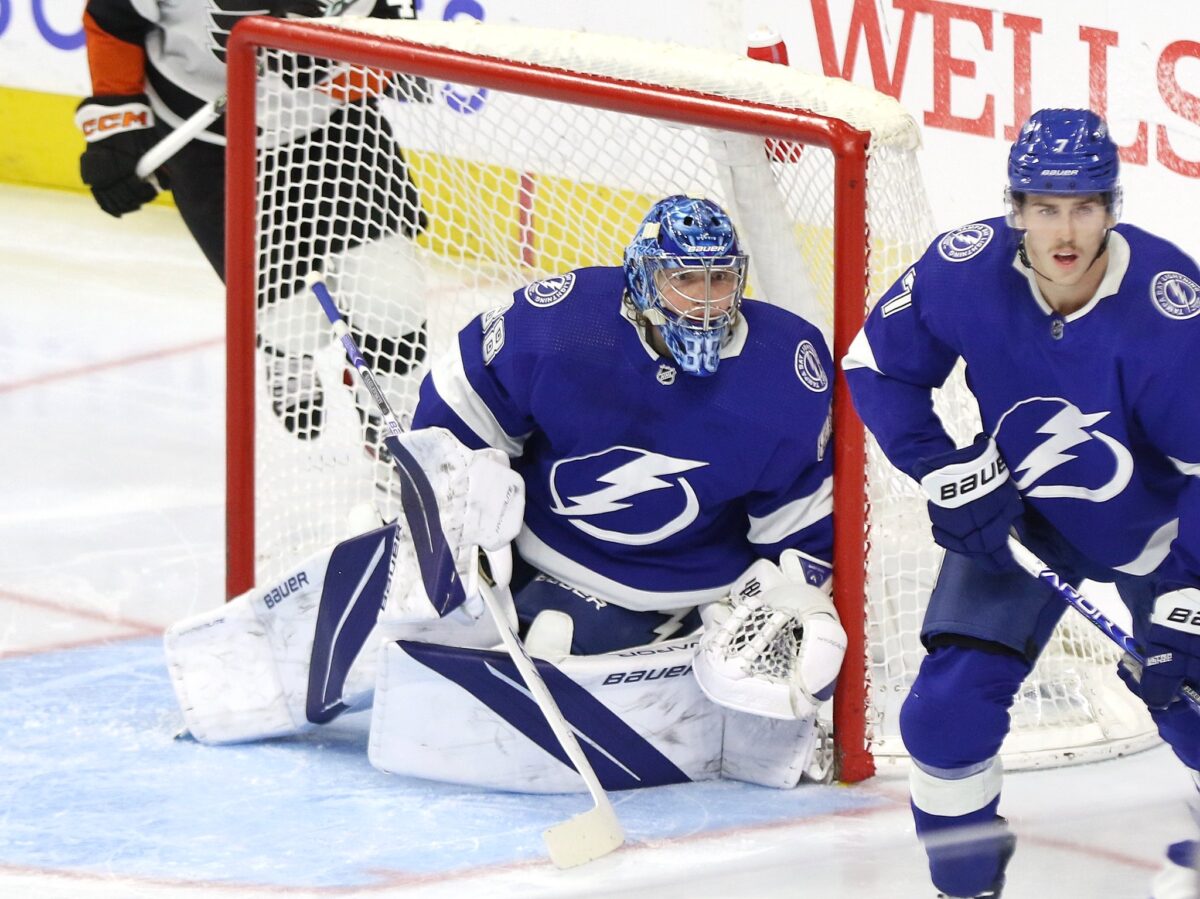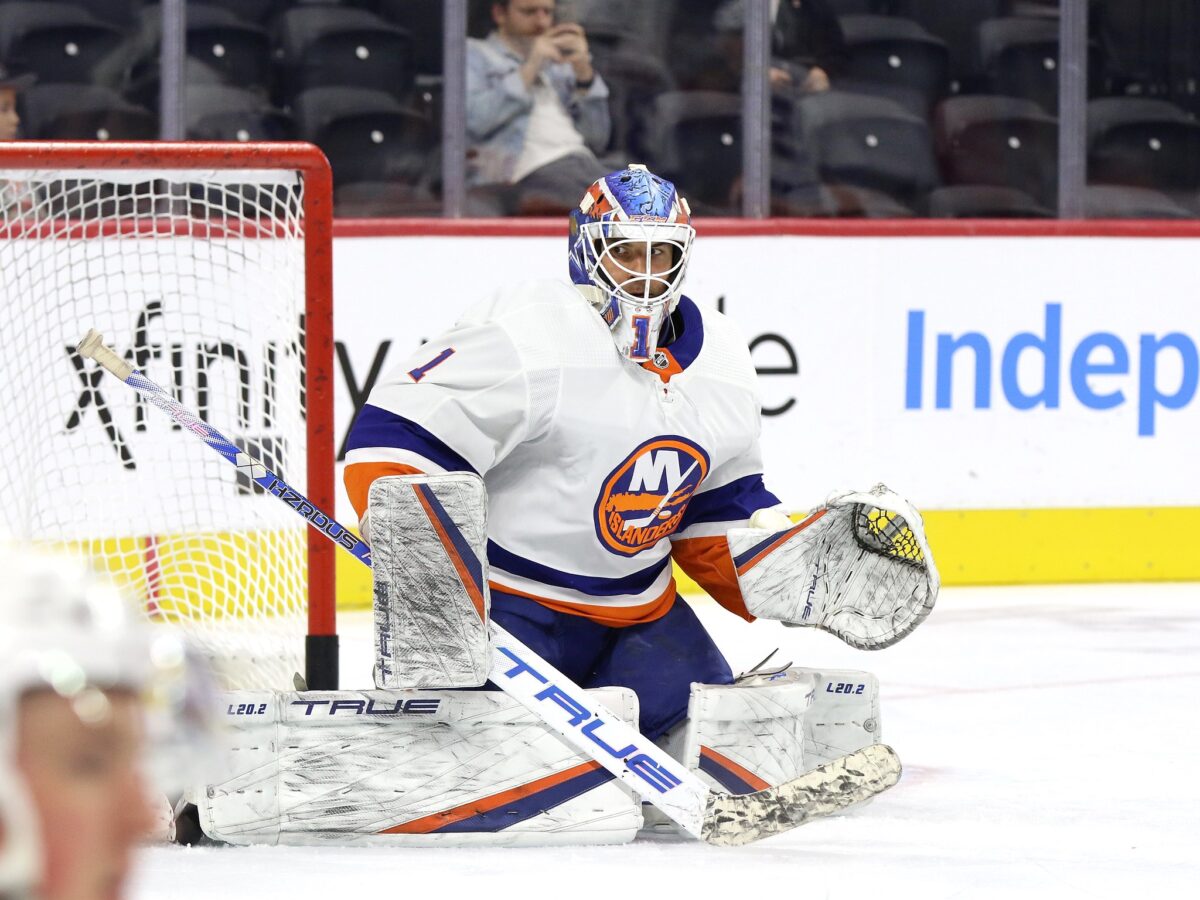The Bridgeport Islanders lost 3-1 on Jan. 27 to the Providence Bruins in what has been a theme all season. It was their third loss in a row to the Bruins, and the tough defeats keep adding up as they have an 11-24-5 record and are in last place in the Atlantic Division.
Related: Bridgeport Islanders Find Key Victory Over Bears
A 3-1 final doesn’t tell the whole story, as the game itself was scoreless through the 52 minutes of action, with both goaltenders putting on a show. On top of that, the final score hides the story of the game, which was the performance of Islanders goaltender Henrik Tikkanen, who was the best player on the ice. He made 33 saves and halted numerous scoring chances from the Bruins that typically would find the back of the net, from breakaway chances to quick blasts that were easily covered up.

Tikkanen was promoted to the American Hockey League (AHL) on Dec. 28 and hasn’t looked back. The 23-year-old goaltender has a .914 save percentage (SV%) and a 2.66 goals-against average (GAA) in seven starts and not only has emerged as a reliable starter but is proving he has a high ceiling that can make him a strong presence in the net. The high ceiling, in particular, goes hand-in-hand with his intangibles and what he provides in the net as a unique goaltender.
Tikkanen’s High Upside
The most noticeable thing about Tikkanen is that he’s tall, and it stands out when he’s on the ice. He’s 6-foot-8 and weighs 215 pounds, making him one of the biggest goaltenders in the AHL and if he makes it to the pro level, he’d also be one of the biggest in the NHL as well. His size alone gives him an advantage as he can cover most of the net when he’s in the right position and dare opponents to thread the needle when shooting the puck on the goal.
Tikkanen’s height, however, isn’t what makes him great and wasn’t the reason the New York Islanders drafted him in the 2020 NHL Entry Draft. The ability to cover up pucks and react to shots separates him from most goaltenders, and it’s a skill that has stood out, especially in recent games. “Not just trusting always on my size but staying on my feet and moving with the puck and staying square,” Tikkanen noted after the game as he looks to become a complete goaltender. Against the Bruins, he eliminated second-chance opportunities, and any top-shelf shot was easily handled. More importantly, he managed to stop a lot of chances off the rush and off quick passes, which require quick reactions and movements from the goaltender.
Having a big goaltender with athleticism and technique changes everything for a team and how they play. It allows a team to build their defense around the goaltender’s ability and not only play more aggressively but crowd the middle of the defensive zone and force opponents to take direct shots from tough angles. In their Stanley Cup runs in 2020 and 2021, the Tampa Bay Lightning designed their defense with Andrei Vasilevskiy in mind. They’d dare opponents to shoot from tough angles and would clean up pucks in the crease to help out their bigger goaltender. The difficult shots were no match for Vasilevskiy, who would make the initial saves, and it allowed the team to win back-to-back titles, with the elite goaltender winning the Conn Smythe Trophy in 2021.

It’s hard to compare Tikkanen, or any goaltender for that matter, to Vasilevskiy. The Lightning goaltender is world-class and arguably the best in the game and an essential part of their success in recent seasons. Vasilevskiy, however, provides a blueprint for a taller and more athletic goaltender, something Tikkanen has proven in his starts with the Islanders. The gap between the two goaltenders remains monumental, but once the skills of the Islanders’ goaltender are honed in, the sky is the limit.
Tikkanen’s Adjustments Since Joining the AHL
There’s a significant difference between how Tikkanen looked when he was first called up to the AHL and how he’s played recently, and understandably so. Any goaltender that is promoted must adjust to the speed, skill, and quality of shots, and as a result, many have their head spinning in those first few games in the net.

Tikkanen’s AHL debut came on Dec. 29 as part of the ripple effect from Semyon Varlamov’s injury. With the Islanders’ backup sidelined, Ken Appleby was called up to the NHL to backup Ilya Sorokin and the AHL team needed a goaltender to split starts with Jakub Skarek, and thus, he was promoted from the ECHL. Against the Springfield Thunderbirds, Tikkanen allowed five goals on 34 shots in a 6-5 overtime victory, with All-Star Ruslan Iskhakov scoring the game-winner. In his next start, a Jan. 4 game against the Hartford Wolf Pack, he allowed three goals on only 24 shots, resulting in a 3-2 defeat.

With each start, Tikkanen continues to improve, and his recent performances reflect his improvements while remaining confident in the net. “I feel better and better every game, and I feel I can trust myself,” he noted after his recent start against the Bruins. He made 33 saves in that game, and the start before that, the Jan. 21 game against the same opponent, he stopped 30 shots in a 2-1 overtime loss, a game the Islanders wouldn’t have earned a point if he wasn’t in the net.
The Bruins have a potent offense; they average 3.32 goals per game and scored six in their Jan. 26 game against the Islanders. It’s one of the reasons they have a 25-13-3-2 record and are in second place in the Atlantic Division. Against Tikkenen, they struggled to find the back of the net until the third period, when they finally adjusted and found the promising young goaltender’s weaknesses.
Where Tikkanen Looks to Improve
The size, while a strength, has also been a weakness throughout his young hockey career. “I’m trying to stay on my feet; that’s probably the biggest thing,” Tikkanen noted regarding the area he was looking to work on. The quick reactions required at the AHL level make it difficult for any goaltender to do that, much less a titan like Tikkanen. The rebounds, low shots, and plays that force him to make second-chance stops are a particular obstacle for a 6-foot-8 goaltender. “When you have long arms and long legs, the holes are bigger when you try to stretch,” he acknowledged as an issue.
It’s how the Bruins scored their first goal of the game late in the third period. They crowded the net and forced Tikkanen out of position, allowing Brett Harrison to find a rebound near the goal and easily poke it in. The way teams beat taller and bigger goaltenders is they look to catch them out of position, making the shots from the slot, the crease, and off of rebounds ideal. Vasilevskiy and Connor Hellebuyck often struggle with second-chance shots and one-timers mainly because it forces them to make a save on the move where they expose more of the net. Vasilevskiy and Hellebuyck are both regarded as big goaltenders at 6-foot-4. At 6-foot-8, Tikkanen’s strengths and weaknesses are further amplified, making his development all the more difficult.
Goaltending is a position that requires time and development, making it one of the toughest positions to evaluate, even at the NHL level. In one game, a goaltender looks like they could lead their team to the Stanley Cup, and in the next game, they allow six goals and look lost in the net. Tikkanen is still in the early phases of his development and has a lot of room to improve. That said, he’s already made significant strides and looks to be in line to be a viable goaltender for the Islanders.